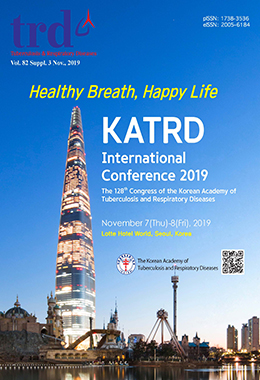Purpose: Reduced Forced vital capacity (FVC) in chronic obstructive pulmonary disease (COPD) is associated with comorbid conditions and behavior restriction. However, limited data are available for the association between reduced FVC and 6-minute walk distance (6MWD) based on COPD severity. Thus, we investigated the relationship between FVC and 6-minute walk distance (6MWD) based on COPD severity. Method: A total of 1,386 COPD patients in the Korean COPD Subgroup Study (KOCOSS) cohort were evaluated. spirometry and six-minute walk test (6MWT) performed at the time of enrollment were analyzed. Patients were divided into two groups, moderate (50%≤ FEV1 %predicted < 80%) (n=895) and severe-to-very severe (FEV1 %prediced < 50%) (n=491). We used a cubic spline model to demonstrate the non-linear relationship between predicted FVC% and 6MWD in moderate and severe-to-very severe COPD patients. Multimodal logistic regression was used to evaluate the association between FVC and short 6MWD. Result: In both moderate and severe-to-very severe COPD patients, those with reduced FVC (< 80% pred) had shorter 6MWD (< 350m in 6MWT, p<0.001 in moderate COPD and p=0.003 in severe-to-very severe COPD) and higher BODE index score (p<0.001 in both groups) than those with preserved FVC. However, there were no significant differences in respiratory symptoms and quality of life. Cubic spline model revealed that 6MWD was peaked around 93% predicted of FVC in moderate COPD patients, while FVC, %pred showed a linear correlation with 6MWD in severe-to-very severe COPD patients. Reduced FVC was significantly associated with short 6MWD in moderate (adjusted odds ratio [aOR], 1.44; 95% CI, 1.03-2.02) and severe-to-very severe COPD patients (aOR, 1.55; 95% CI, 1.01-2.40). Conclusion: Reduced FVC is significantly associated with shorter 6MWD in moderate-to-very severe COPD patients, which suggest that reduced FVC might be reflective of physical activity measured by 6MWD in moderate-to-very severe COPD patients.




